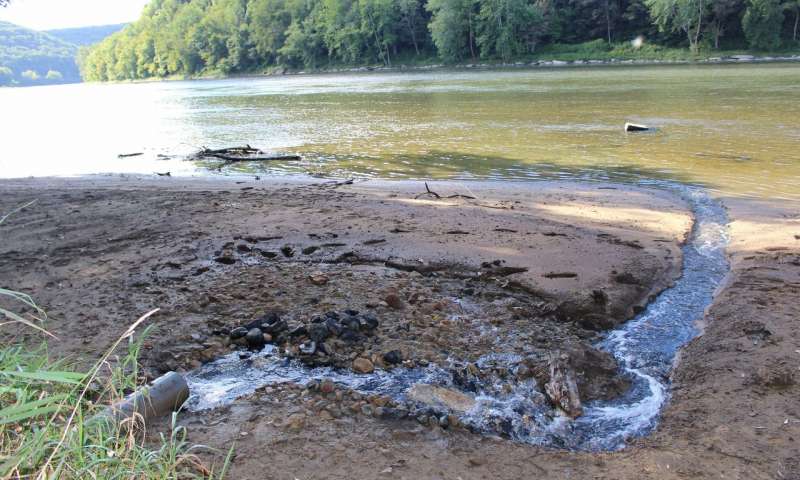

Photo: Treated oil and gas wastewater flows into a stream in western Pennsylvania. A new Duke study finds stream sediments at disposal sites such as this one have levels of radioactivity that are 650 times higher than at unaffected upstream sites. Credit: Avner Vengosh, Duke University
The contamination is coming from the disposal of conventional, or non-fracked, oil and gas wastewater, which, under current state regulations, can still be treated and discharged to local streams.
"It’s not only fracking fluids that pose a risk; produced water from conventional, or non-fracked, oil and gas wells also contains high levels of radium, which is a radioactive element. Disposal of this wastewater causes an accumulation of radium on the stream sediments that decays over time and converts into other radioactive elements," said Avner Vengosh, professor of geochemistry and water quality at Duke’s Nicholas School of the Environment.
The level of radiation found in stream sediments at the disposal sites was about 650 times higher than radiation in upstream sediments. In some cases, it even exceeded the radioactivity level that requires disposal only at federally designated radioactive waste disposal sites. "Our analysis confirms that this accumulation of radioactivity is derived from the disposal of […]
Full article: Radioactivity from oil and gas wastewater persists in Pennsylvania stream sediments
New study examines impacts of fracking on water supplies worldwide
Oil and gas wastewater radioactivity persists in Pennsylvania stream sediments
Pennsylvania watershed contaminated with radioactive material and endocrine-disrupting chemicals
5 Million Gallons of Freshwater Used to Frack Just One Well
Fracking Is Dangerous To Your Health — Here’s Why
Penn State study: Spraying brine from drilling, fracking on roadways is hazardous
Clean water is essential for life, yet millions of Americans unknowingly consume contaminants through their…
Human brains contain higher concentrations of microplastics than other organs, according to a new study, and the…
From the Office of the Governor: In anticipation of a multi-day, significant atmospheric river in Northern California,…
From Governor Newsom: Scientists, water managers, state leaders, and experts throughout the state are calling…
Photo: A harmful algal bloom in Milford Lake, Kansas, made the water appear bright green.…
An expanded plastic foam coffee cup is at a donut shop in Monterey Park, California.…